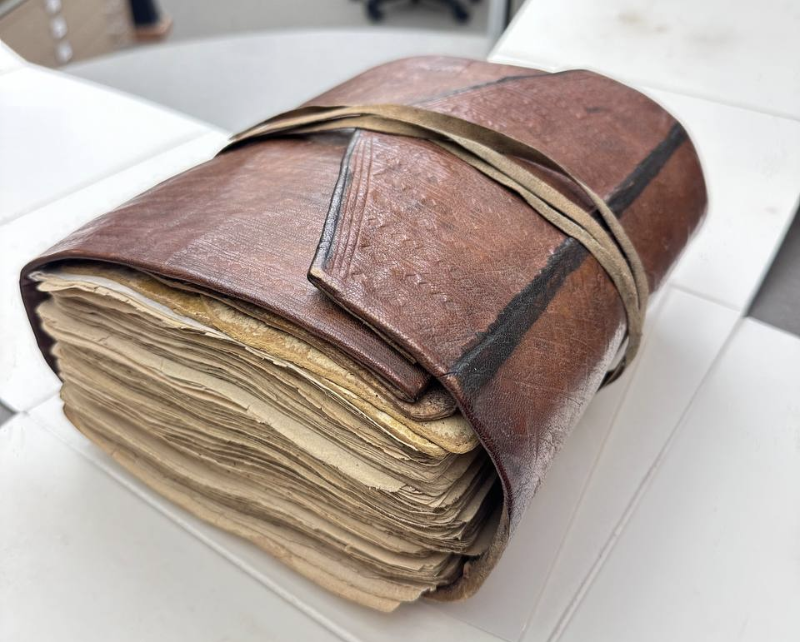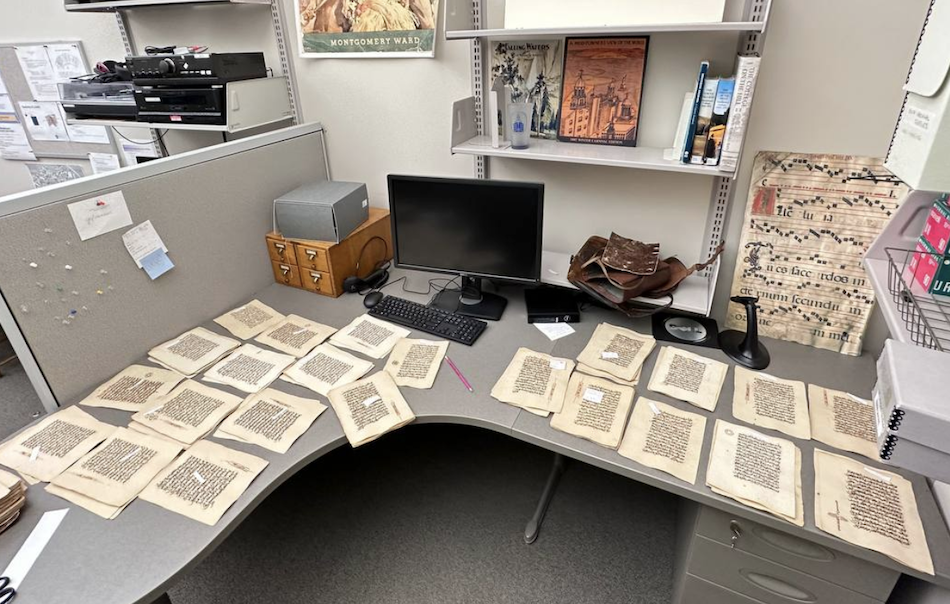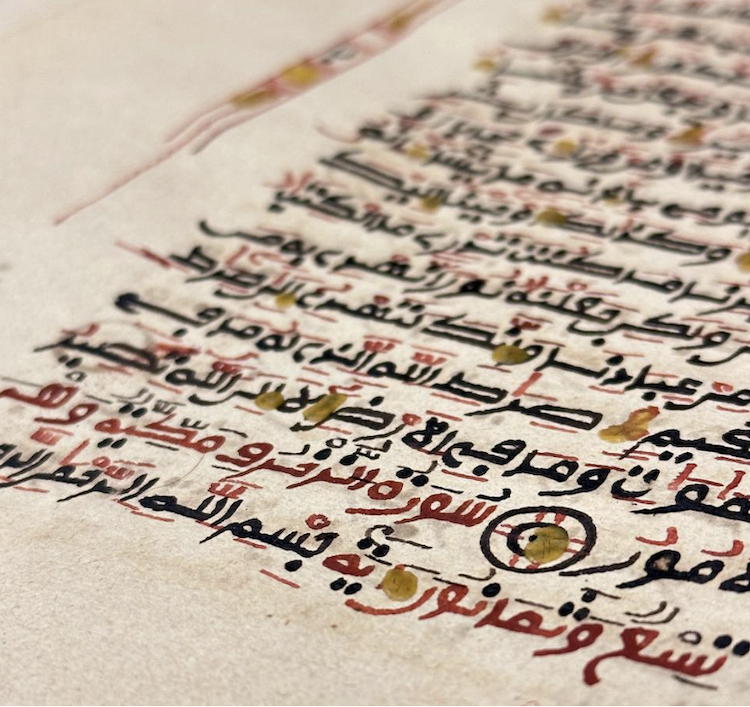Student Projects: Unraveling the Mysteries of a 200-Year-Old Quran Manuscript from Nigeria
Being Muslim, the Quran holds a profound and sentimental place in my heart. Imagine my excitement when I had the opportunity to explore the Special Collections at Middlebury College and came across an extraordinary treasure: a 200-year-old Quran manuscript from Nigeria. Its exquisite calligraphy and unique format left a lasting impression, setting the stage for a remarkable journey.

The Quran’s pages were not bound together as in the typical Quran we are accustomed to. Instead, they were distributed among guests, with each person receiving a single page to read. Over the years, these pages became disordered, scattered like pieces of a magnificent puzzle waiting to be solved. I decided to take on the challenge of restoring this timeless text to its rightful order, embarking on an incredible adventure.
For two weeks, I dedicated myself to this endeavor, starting by identifying the chapters to which each page belonged. It wasn’t easy at first, as the script differed from the standard Quranic font. However, I gradually acclimated to it and began categorizing the pages according to their respective chapters. Some chapters spanned over 60 pages, leading to multiple piles, each representing a different section within the chapter.

Throughout this project, I made several intriguing discoveries. One of the most notable was encountering chapters with names I didn’t recognize. Further research revealed that some chapters in the Quran had multiple names assigned by people, which were not part of the original revelation. Only the verses themselves were considered divine revelation.
As I delved deeper into the verses, I stumbled upon a striking variation from the Quran I had memorized from the traditional text. In the Nigerian Quran, a specific verse ended with the word “تعملون” instead of “يعملون,” altering the word from the third person to the second person. This revelation shocked me, as it was a clear departure from the version commonly recited by Muslims. My subsequent research unveiled the Quran’s oral transmission during the Prophet Muhammad’s time.
The Quran remained unchanged through history and was initially revealed orally. It was preserved through memorization for hundreds of years. During the Prophet Muhammad’s era, he imparted the Quran to thousands, and they, in turn, memorized it and passed it down through generations. The transition to a written form only occurred decades after the Prophet’s passing, leading to minor differences in word spellings due to the diverse dialects spoken by the Prophet’s followers.

What began as a special collocation task became an incredible privilege, and I found immense joy in the process. To my surprise, it took less time than anticipated, as I became fully immersed in the task. This experience deepened my appreciation for the Quran’s timelessness, as I read the same profound meanings on old vintage paper that I usually encounter in the modern Quran. It reaffirmed the Quran’s remarkable and unchanging nature, demonstrating its enduring relevance throughout history.
In conclusion, my journey to organize the 200-year-old Quran manuscript from Nigeria was a testament to the Quran’s enduring legacy and the beauty of its diverse manifestations. Exploring the text’s historical evolution was a remarkable experience, reinforcing the sacredness and significance of the Quran in the hearts of believers.
Yahya is a Computer Science major and member of the class of 2026. In addition to his work in Special Collections, he serves as resident assistant, photographer, and teaching assistant for 3D industrial design in the Johnson Makerspace.
Want to learn more about Special Collections? Follow us on Instagram.

